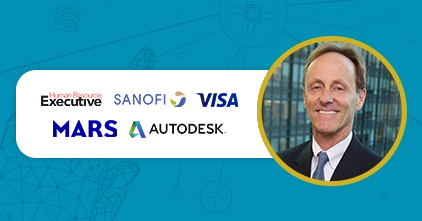LMS integrations have been the talk of the town for years. But still, some companies don’t implement it. Here, we share 5 ways on how learning system integrations can help in training and development.

Since virtual instructor-led training (VILT) is here to stay, more organizations are looking into ways on how they can deliver training more effectively. Truth be told, there are a lot of things to consider when it comes to L&D programs. Of course, there’s the usual training course content, design, and delivery. But more than this, everything needs to be seamless and easy for L&D and HR leaders’ end too.
This is where integrations come in. The main goal of every integration is to enhance the learner’s training experience WHILE streamlining the administrator experience as well. It involves a training solution that will be integrated within an LMS or LXP.
As you may know, a learning management system (LMS) is the most common industry term for a training platform. It’s a software where training content is stored, delivered, and tracked. Some examples of this are Cornerstone, Talentsoft, and Skillsoft.
On the other hand, a learning experience platform (LXP) is a training platform wherein learning content is curated and aggregated to provide a personalized and adaptive learning experience for users. Common examples of LXPs are Degreed and EdCast.
The great thing about these online training platforms is that you can easily integrate external learning solutions and content within them. Some of the most common kinds of learning system integrations are:
- SCORM (Sharable Content Object Reference Model) is an industry technical standard for eLearning training ensuring that SCORM packages are interoperable and communicating well with almost all LMS environments.
- SAML (Security Assertion Markup Language) passes information about users, logins, and other attributes and credentials between the identity provider (client side) and service providers (training solution provider). There are 2 ways to trigger SAML integration: (a) learner clicks on a button on a specific internal website (intranet), and (b) learner triggers a URL created by the provider for the client

Getting back to the main point of this article, here are the advantages of having integrations within your LMS or LXP:
Easy access through single sign on (SSO)
First and one of the most important and practical benefits of having a training solution integrated into your LMS/LXP is easy access. This allows learners to log into a particular learning portal to access their training program without having to use separate credentials (usernames and passwords).
For example, a learner needs to access their business language training course with goFLUENT through your LMS. If the language solution is already integrated with your LMS, the learner only needs to access the LMS and from there, goFLUENT’s training courses will be readily available.
More so, if you have an LXP and a training solution is integrated with SAML, your learner can just click on a button within a specific website (intranet) or visit a link given by your training solutions provider.
This is made possible by single sign on (SSO) which is similar to how you can log into a specific website using your Facebook or Google accounts, making it easier and faster for you to access content and services within that site.
Another advantage of SSO is strengthened security. It’s because integrations guarantee authentication through and by your system (client authentication system) which verifies if the user who’s trying to access the learning courses are indeed your learners or employees.
Instant training registration
What’s best about learning system integrations is that it won’t only be efficient and hassle-free on the learners’ side of things, but it will also make everything seamless for learning leaders in HR and L&D departments.
For one, integrations enable on the fly (OTF) creation of learner profiles within a few seconds. This means that training managers, for instance, no longer have to send an exhaustive list of learners who will be registered for the training program to their provider, which also equates to less work.
Through OTF, automatic credit line assignment can also be done in a matter of seconds, making deployment of and access to the training smoother than ever.
Some other perks of having integrations using OTF are:
- You no longer need to wait for several days just to register the learners (unlike in manual registration).
- There is no exchange of learners’ data through emails.
- There is no manual work.

Increased traffic in LMS and LXP
Since integrations make it easier for learners to access their training courses in your LMS/LXP, this will then boost traffic within your learning system. As learners are having smooth user experience within your LMS/LXP, they’ll try to access it more and explore the training courses available for them to upskill and reskill.
More importantly, learning platform traffic is often used as a key performance indicator (KPI) by training managers and HR professionals to gauge training utilization and compliance, albeit surface-level.
But what’s good with measuring the traffic within your learning platform is that the numbers and data can justify the use of digital learning systems and other digital technologies for training within your company. More so, having more learners to use your learning system means more learning data. Some KPIs you can further measure are training completion rate, training compliance rate, average time to completion, and such metrics.
The point is that having an increased traffic in your LMS and LXP can be of great help when it comes to building a business case for learning and development. Through the increased accessibility of LMS/LXP through integrations, learners will be able to take the training courses available to them and access the rich learning content within your LMS/LXP.
Automatic reports and assessments
Guess what, there’s more to integrations than just having a smoother user experience and more efficient process for learning leaders. Integrations can also help you generate automatic reports and assessments for your learners. In fact, with SCORM, you can easily access automatic learner reports and other data within your own LMS.
For instance, when goFLUENT solutions are integrated into their client’s LMS/LXP, training data are directly uploaded by goFLUENT to the client’s eLearning system, making it easier and faster for training managers to gather training metrics and track their learners’ progress.
Better than this, you can quickly check how long your learners stay in your eLearning platform (time spent) and the status of their training courses (e.g. on-going, completed) and check other available training courses that might be suitable for each learner.

Easier management of data through HR’s portal
Since training data and reports are sent directly to your LMS/LXP, it’s also easier for training managers and learning leaders to monitor learner progress and generate customized reports based on the needs and objectives.
As an example, goFLUENT sends training data directly to their clients (through data feed) based on the request of the client. This makes monitoring of the training program more efficient and less time consuming since the client doesn’t have to do so much anymore.
This way, integrations let you manage training data within your LMS/LXP quicker and more efficiently through faster transmission of learner data and reports from your training provider straight to your own learning system.
Conclusion
As more companies are now maximizing the use of digital learning for L&D, it’s great to explore how you can make the process easier not only for your learners but for your L&D administrators and other learning leaders through integrations. Learn more about how we can help you achieve this through a free demo.



